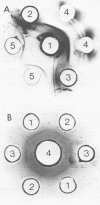Abstract
Serological relatedness of ribosomes from microorganisms of the Mycobacterium, Nocardia, and Corynebacterium genera has been analyzed by the microplate immunodiffusion technique. Mycobacterium and Nocardia proved homogeneous and closely related taxa, whereas Corynebacterium was found to be a heterogeneous phylum connected by remote links to the others. The taxonomic position of "diphtheroid microorganisms" (non-acid-fast, gram-positive bacteria morphologically similar to corynebactria), which were found together with Mycobacterium leprae in human leprosy lesions, was also investigated. Ribosomes of diphtheroid bacteria strongly cross-reacted with antisera against several mycobacteria and nocardiae but not against corynebacteria. Moreover, ribosomes from independently isolated diphtheroid strains proved serologically related and yielded strong cross-reactions with antisera against M. leprae as well as with sera from leprosy patients. Hence, diphtheroid microorganisms represent a homogeneous group immunologically related to mycobacteria in general and more specifically to M. leprae.
Full text
PDF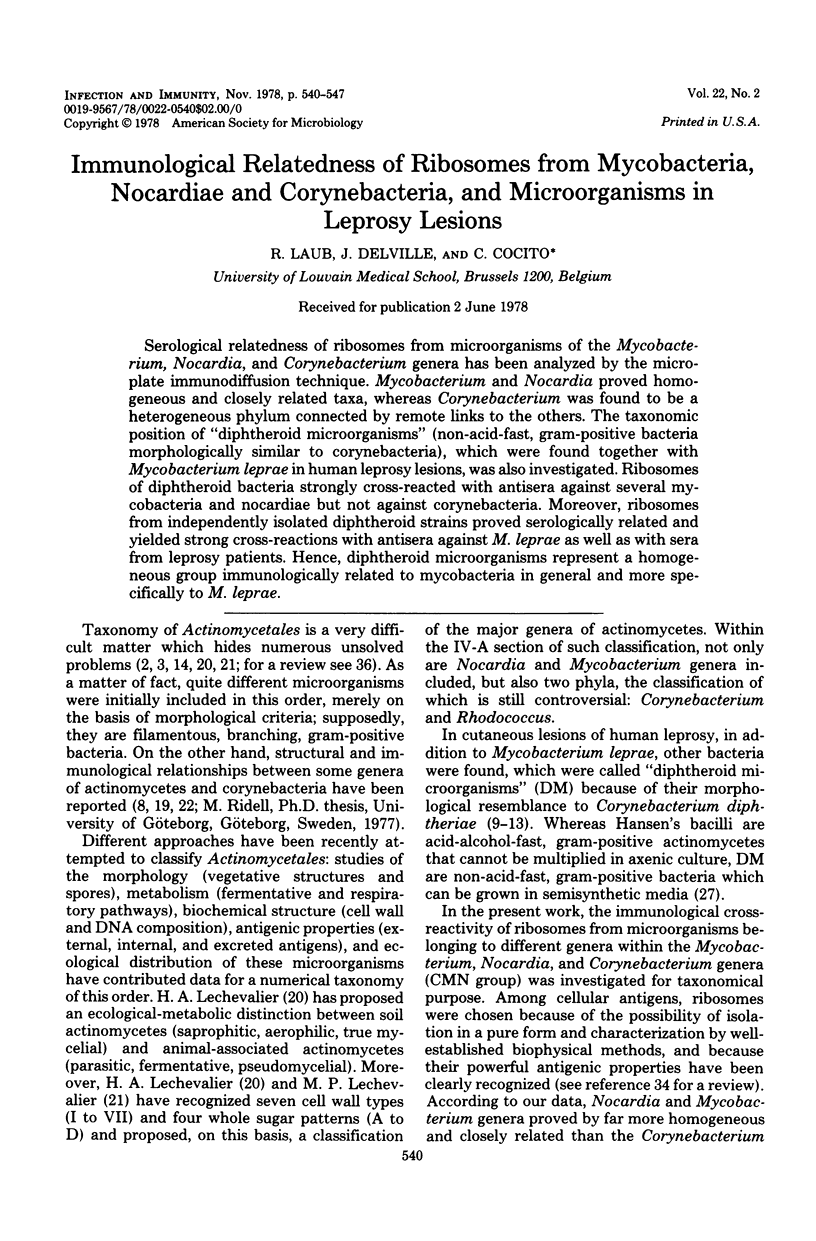
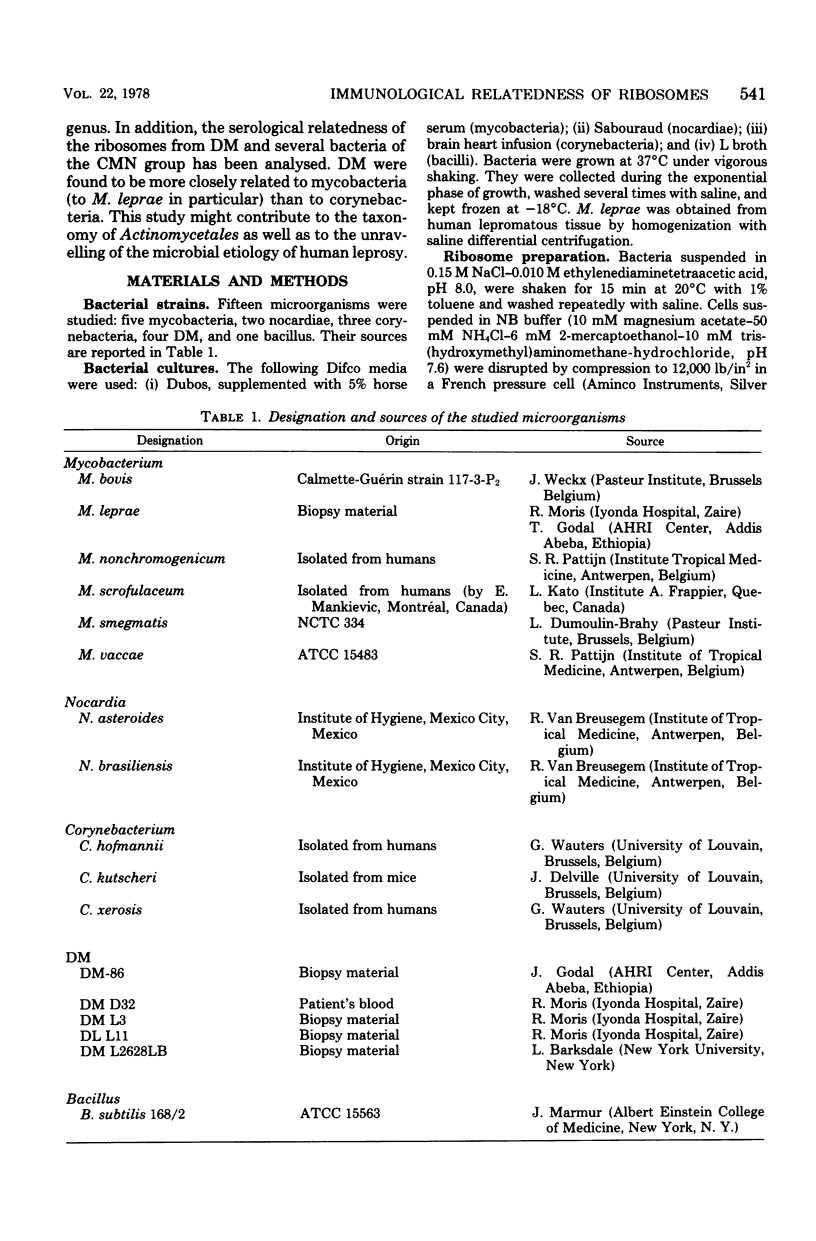
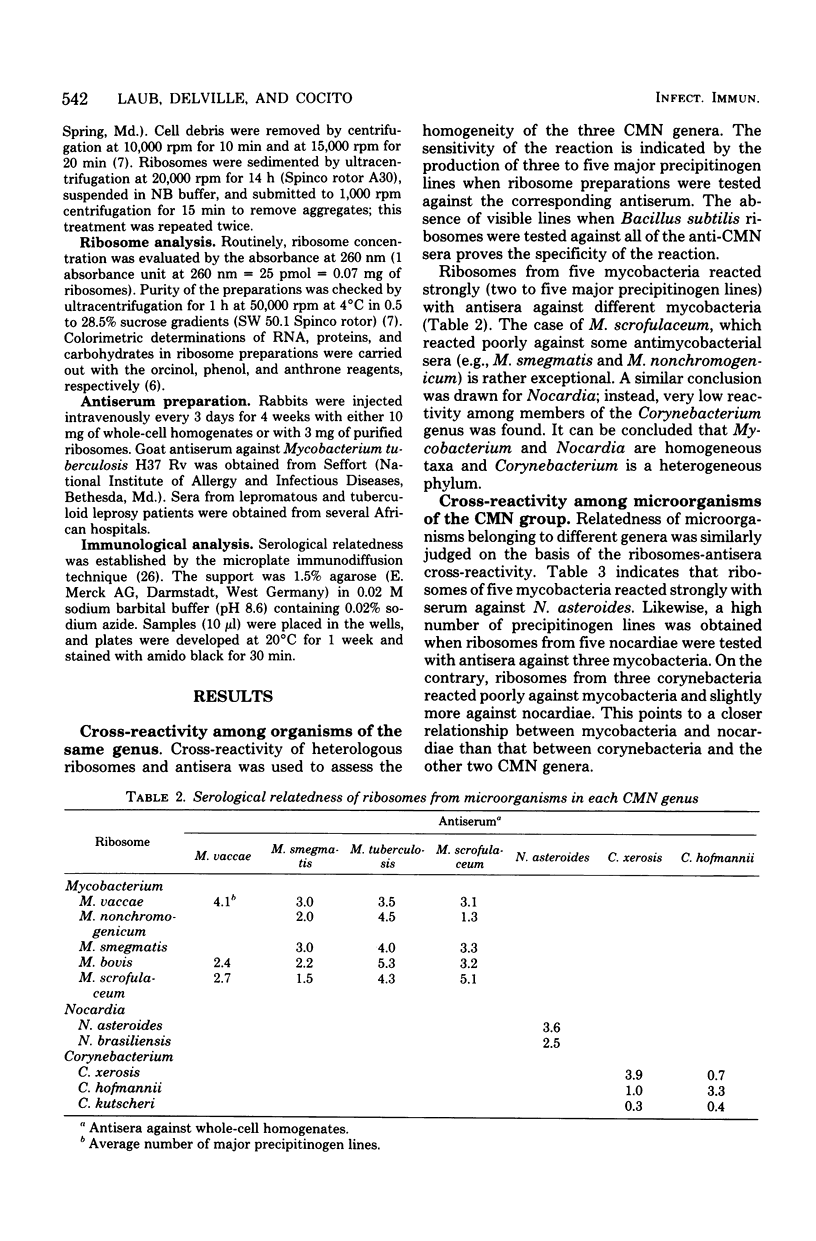
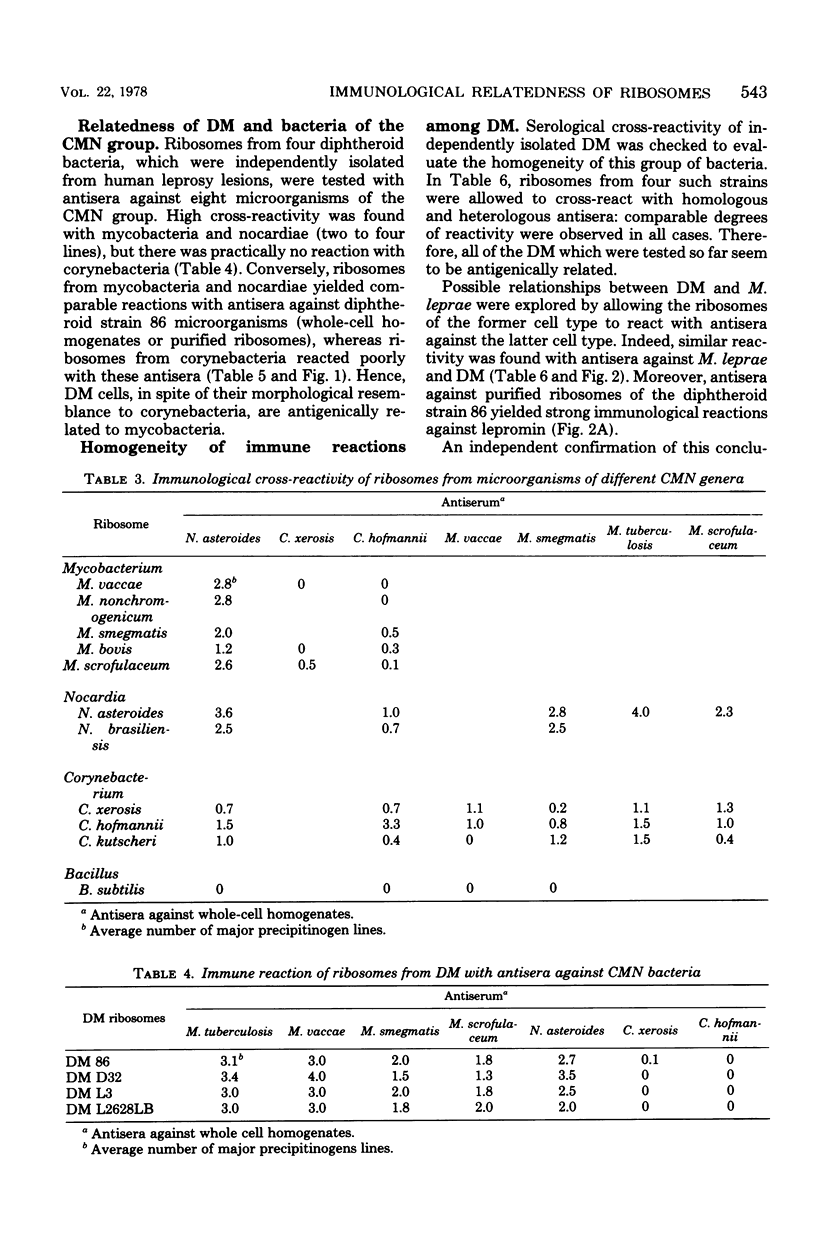
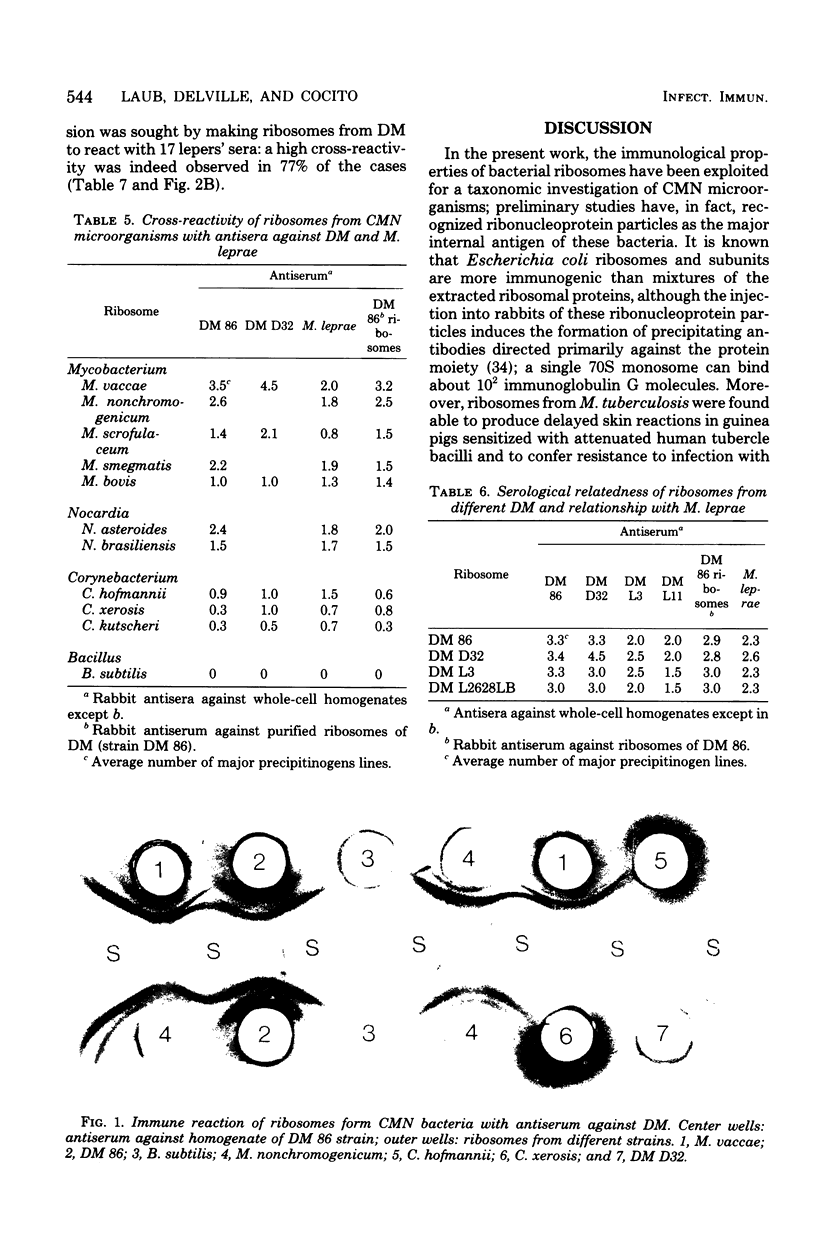
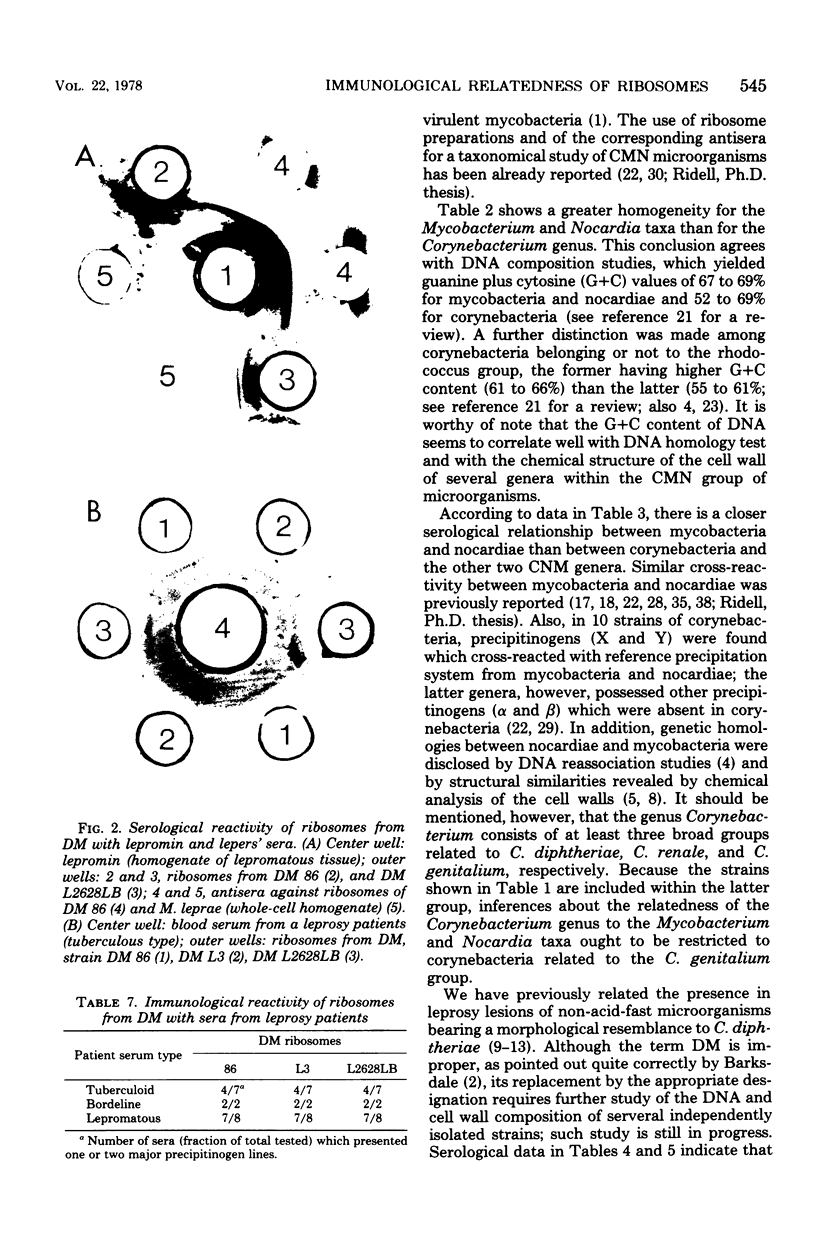
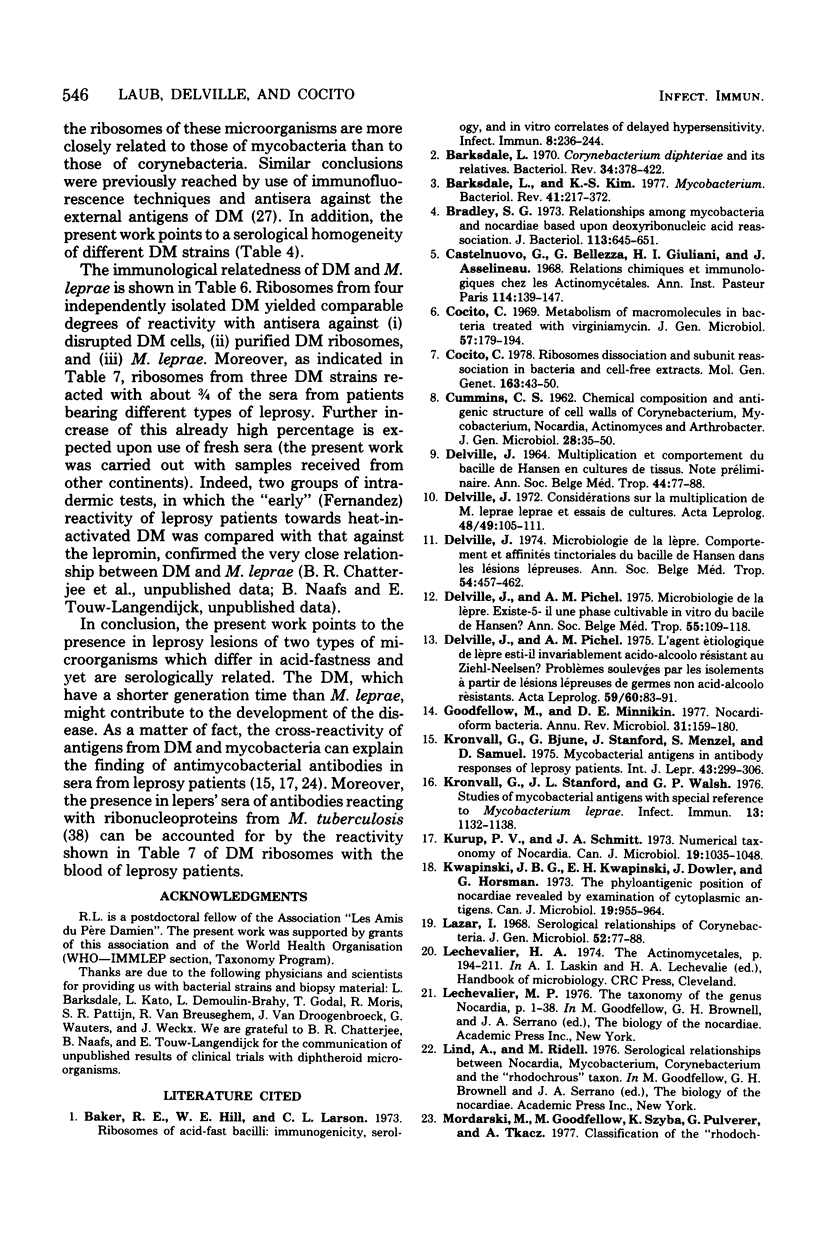
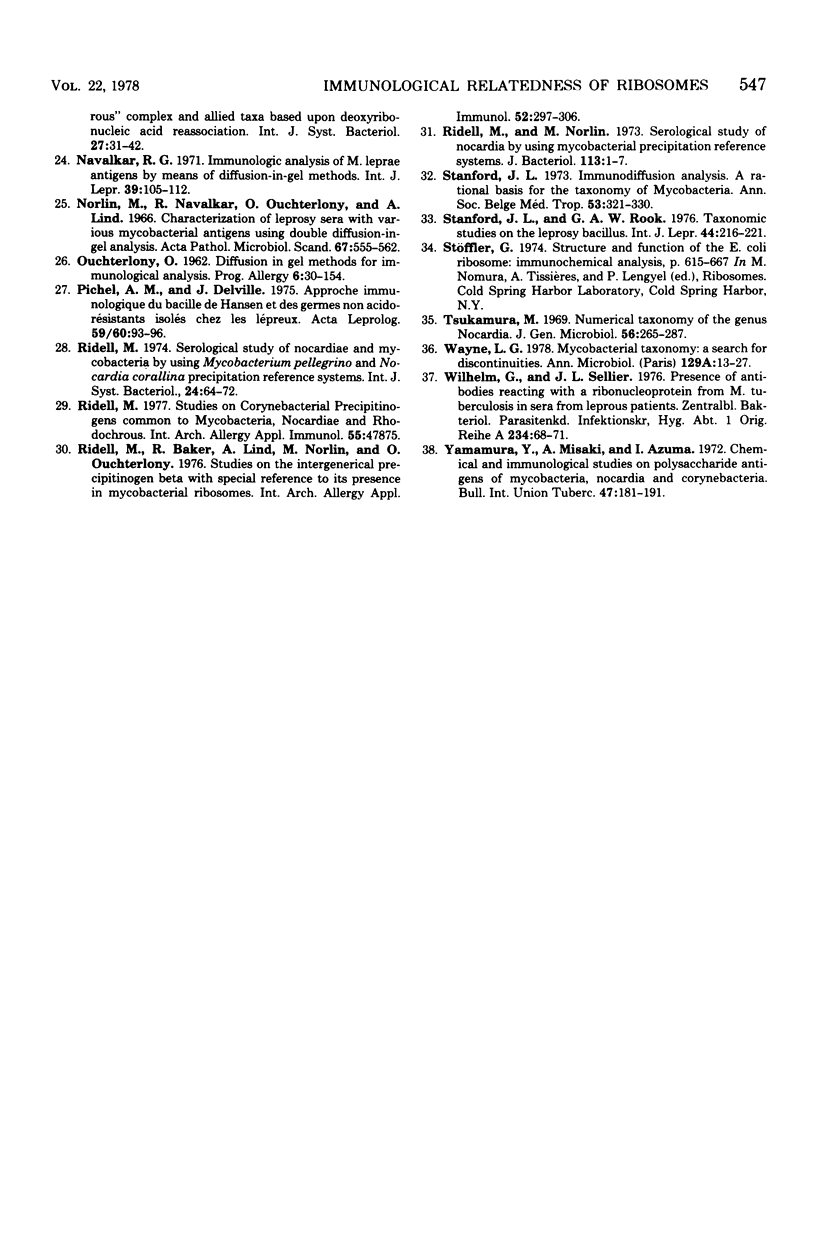
Images in this article
Selected References
These references are in PubMed. This may not be the complete list of references from this article.
- Baker R. E., Hill W. E., Larson C. L. Ribosomes of acid-fast bacilli: immunogenicity, serology, and in vitro correlates of delayed hypersensitivity. Infect Immun. 1973 Aug;8(2):236–244. doi: 10.1128/iai.8.2.236-244.1973. [DOI] [PMC free article] [PubMed] [Google Scholar]
- Barksdale L. Corynebacterium diphtheriae and its relatives. Bacteriol Rev. 1970 Dec;34(4):378–422. doi: 10.1128/br.34.4.378-422.1970. [DOI] [PMC free article] [PubMed] [Google Scholar]
- Barksdale L., Kim K. S. Mycobacterium. Bacteriol Rev. 1977 Mar;41(1):217–372. doi: 10.1128/br.41.1.217-372.1977. [DOI] [PMC free article] [PubMed] [Google Scholar]
- Bradley S. G. Relationships among mycobacteria and nocardiae based upon deoxyribonucleic acid reassociation. J Bacteriol. 1973 Feb;113(2):645–651. doi: 10.1128/jb.113.2.645-651.1973. [DOI] [PMC free article] [PubMed] [Google Scholar]
- CUMMINS C. S. Chemical composition and antigenic structure of cell walls of Corynebacterium, Mycobacterium, Nocardia, Actinomyces and Arthrobacter. J Gen Microbiol. 1962 Apr;28:35–50. doi: 10.1099/00221287-28-1-35. [DOI] [PubMed] [Google Scholar]
- Castelnuovo G., Bellezza G., Giuliani H. I., Asselineau J. Relations chimiques et immunologiques chez les Actinomycétales. II. Relations sérologiques entre streptomycètes, nocardiae et mycobactéries. Ann Inst Pasteur (Paris) 1968 Feb;114(2):139–147. [PubMed] [Google Scholar]
- Cocito C. Metabolism of macromolecules in bacteria treated with virginiamycin. J Gen Microbiol. 1969 Aug;57(2):179–194. doi: 10.1099/00221287-57-2-179. [DOI] [PubMed] [Google Scholar]
- Cocito C. Pressure dissociation of bacterial ribosomes and reassociation of ribosomal subunits. Mol Gen Genet. 1978 Jun 1;162(1):43–50. doi: 10.1007/BF00333849. [DOI] [PubMed] [Google Scholar]
- DELVILLE J. P. MULTIPLICATION ET COMPORTEMENT DU BACILLE DE HANSEN EN CULTURES DE TISSUS. NOTE PR'ELIMINAIRE. Ann Soc Belges Med Trop Parasitol Mycol. 1964;44:77–87. [PubMed] [Google Scholar]
- Delville J. Microbiologie de la lèpre. Comportement et affinites tinctoriales du bacille de Hansen dans le lésions lépreuses. Ann Soc Belg Med Trop. 1974;54(6):457–462. [PubMed] [Google Scholar]
- Delville J., Pichel A. M. Microbiologie de la lèpre. Existe-t-il une phase cultivable in vitro du bacille de Hansen? Ann Soc Belg Med Trop. 1975;55(2):109–118. [PubMed] [Google Scholar]
- Goodfellow M., Minnikin D. E. Nocardioform bacteria. Annu Rev Microbiol. 1977;31:159–180. doi: 10.1146/annurev.mi.31.100177.001111. [DOI] [PubMed] [Google Scholar]
- Kronvall G., Bjune G., Stanford J., Menzel S., Samuel D. Mycobacterial antigens in antibody responses of leprosy patients. Int J Lepr Other Mycobact Dis. 1975 Oct-Dec;43(4):306–306. [PubMed] [Google Scholar]
- Kronvall G., Stanford J. L., Walsh G. P. Studies of mycobacterial antigens, with special reference to Mycobacterium leprae. Infect Immun. 1976 Apr;13(4):1132–1138. doi: 10.1128/iai.13.4.1132-1138.1976. [DOI] [PMC free article] [PubMed] [Google Scholar]
- Kurup P. V., Schmitt J. A. Numerical taxonomy of Nocardia. Can J Microbiol. 1973 Aug;19(8):1035–1048. doi: 10.1139/m73-164. [DOI] [PubMed] [Google Scholar]
- Kwapinski J. B., Kwapinski E. H., Dowler J., Horsman G. The phyloantigenic position of nocardiae revealed by examination of cytoplasmic antigens. Can J Microbiol. 1973 Aug;19(8):955–964. doi: 10.1139/m73-153. [DOI] [PubMed] [Google Scholar]
- Navalkar R. G. Immunologic analysis of Mycobacterium leprae antigens by means of diffusion-in-gel methods. Int J Lepr Other Mycobact Dis. 1971 Apr-Jun;39(2):105–112. [PubMed] [Google Scholar]
- Norlin M., Navalkar R. G., Ouchterlony O., Lind A. Characterization of leprosy sera with various mycobacterial antigens using double diffusion-in-gel analysis. 3. Acta Pathol Microbiol Scand. 1966;67(4):555–562. doi: 10.1111/apm.1966.67.4.555. [DOI] [PubMed] [Google Scholar]
- OUCHTERLONY O. Diffusion-in-gel methods for immunological analysis. II. Prog Allergy. 1962;6:30–154. doi: 10.1159/000313795. [DOI] [PubMed] [Google Scholar]
- Ridell M., Baker R., Lind A., Norlin M., Ouchterlony O. Studies on the intergenerical precipitinogen beta with special reference to its presence in mycobacterial ribosomes. Int Arch Allergy Appl Immunol. 1976;52(1-4):297–306. doi: 10.1159/000231695. [DOI] [PubMed] [Google Scholar]
- Ridell M., Norlin M. Serological study of nocardia by using mycobacterial precipitation reference systems. J Bacteriol. 1973 Jan;113(1):1–7. doi: 10.1128/jb.113.1.1-7.1973. [DOI] [PMC free article] [PubMed] [Google Scholar]
- Stanford J. L. Immunodiffusion analysis--a rational basis for the taxonomy of mycobacteria. Ann Soc Belg Med Trop. 1973;53(4):321–330. [PubMed] [Google Scholar]
- Stanford J. L., Rook G. A. Taxonomic studies on the leprosy bacillus. Int J Lepr Other Mycobact Dis. 1976 Jan-Jun;44(1-2):216–221. [PubMed] [Google Scholar]
- Tsukamura M. Numerical taxonomy of the genus Nocardia. J Gen Microbiol. 1969 Jun;56(3):265–287. doi: 10.1099/00221287-56-3-265. [DOI] [PubMed] [Google Scholar]
- Wayne L. G. Mycobacterial taxonomy: a search for discontinuities. Ann Microbiol (Paris) 1978 Jan;129(1):13–27. [PubMed] [Google Scholar]
- Wilhelm G., Sellier J. L. Presence of antibodies reacting with a ribonucleoprotein from Mycobacterium tuberculosis in sera from leprous patients. Zentralbl Bakteriol Orig A. 1976 Jan;234(1):68–71. [PubMed] [Google Scholar]
- Yamamura Y., Misaki A., Azuma I. Chemical and immunological studies on polysaccharide antigens of mycobacteria, nocardia and corynebacteria. Bull Int Union Tuberc. 1972 Feb;47:181–191. [PubMed] [Google Scholar]




